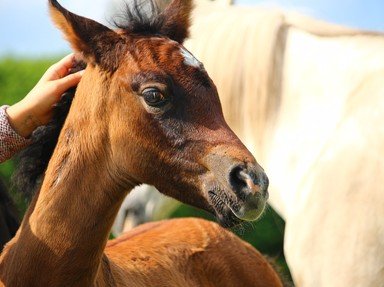Quiz Answer Key and Fun Facts
1. You are out to the paddock to feed your horse his morning meal. You notice that he is kicking his belly and rolling in discomfort. These are signs that your horse has what?
2. Which is the correct name for the procedure done by the vet to file the horse's teeth down?
3. Choke is an impaction of the horse's trachea, or windpipe.
4. A snotty discharge from the nose is an indication that the horse probably has what disease?
5. There are inhalers for horses with chronic obstructive pulmonary disease, which is a breathing difficulty.
6. Which worm causes large areas of irritation around the hindquarters?
7. To reduce risk of worms, it is good to have other animals, such as sheep and goats, grazing in the same areas as horses. What is this called?
8. What is the first standard procedure used to test a horse for lameness called?
9. Septic arthritis is most common in older animals.
10. Ear plaques, white raised areas on the inner surface of the horse's ear, are highly dangerous and cause much discomfort.
Source: Author
super_hot_girl
This quiz was reviewed by FunTrivia editor
crisw before going online.
Any errors found in FunTrivia content are routinely corrected through our feedback system.

